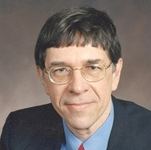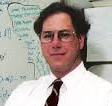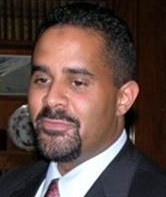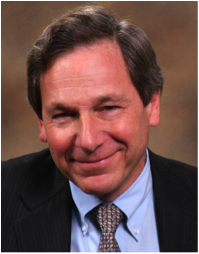
MENU
Symposium 2014 Home
Registration
2014 Agenda
C4I
Home
GMU C4I Center-AFCEA Symposium
May 20-21, 2014
SESSION 2: Leading Edge Research Highlights
_____________________
Machine Execution of Human Intentions
Mark Waser
CTO, Digital Wisdom Solutions

May 20, 2014 at 13:00
ABSTRACT
As military machines become ever more intelligent and more autonomous, the second order properties of man-machine coordination are going to become increasingly important. There have already been numerous expensive accidents due to the lack of communications of "intentions" from machine to man - and the ability of machines to process human intentions is getting closer to becoming reality. Further, machines need to become much better at recognizing and communicating anomalies if they are to avoid becoming vulnerable to both tragic accidents and intentional misdirection and "spoofing." As battle is conducted at an ever-increasing pace in an increasingly complex environment, the interface and coordination of control between machine and man needs to evolve to take advantage of the strengths and support the weaknesses of each in order to maintain the edge and the safety that we need to be able to expect.
BIO
MARK WASER has over 20 years of experience in software systems design & development and artificial intelligence. He has developed systems ranging from an expert system shell and builder for Citicorp to a neural network evaluating medical images of pilots for Wright-Patterson AFB to numerous natural language processing and information extraction programs. Mr. Waser has an M.S.E. degree in Artificial Intelligence from the University of Pennsylvania and has performed doctoral studies in Machine Learning & Human Decision Making at George Mason University. His primary area of expertise is development safe, ethical architectures and motivational systems for intelligent machines.
_____________________
Quantum Ghosts Go Bump in the Night
Dr. David Cyganski
Dean of Engineering, ad interim, and
Professor in the Department of Electrical and Computer Engineering
Worcester Polytechnic Institute (WPI)

May 20, 2014 at 13:00
ABSTRACT
Recently there has been considerable debate about whether certain "quantum" computer implementations actually deliver super-classical, exponential, speed-up of computations. Questions have also been asked about the vulnerabilities of seemingly perfect quantum encryption schemes. In this talk we will describe some novel results that illustrate the caution with which one must approach the question of non-classicality of quantum operations. In particular we will assemble, examine closely and then challenge an apparently perfectly private quantum communications scheme. The latter examination will also justify the title of this talk. Along the way we will apply and explore several interpretations of quantum theory and vindicate the need to always treat quantum weirdness with extreme scrutiny.
BIO
DR. DAVID CYGANSKI is Dean of Engineering, ad interim, and a Professor in the Department of Electrical and Computer Engineering at WPI where he has also held the positions of Vice President of Information Systems and Vice Provost. Previously he was a Member of the Technical Staff at Bell Laboratories. He is an active and widely cited researcher in the areas of radar, precision wireless location, automatic target recognition, image and sensor data analysis, optimization of network communication and physics. He has been the recipient of 68 research grants, funded by the government, and the defense, aerospace and medical industries. He has published more than 80 journal papers, book chapters and conference papers and is a coauthor of the book Information Technology: Inside and Outside.
_____________________
The New Robotics Ecosystem for Defense and Security
Dr. Michael A. Gennert
Director, Robotics Engineering
Worcester Polytechnic Institute (WPI)

May 20, 2014 at 13:00
ABSTRACT
Robots and robotics are rapidly transforming the way we live and work. Driven by the supply side of advancing technologies in algorithms, computing hardware, and communications and pulled by demands for security, defense, health, and manufacturing, robotics makes possible what was recently science fiction. Drones and IED defeat robots are already well-established. On the horizon are other technologies: humanoid robots for disaster response, logistics robots for materiel handling, and robots for intelligence, surveillance, and reconnaissance. To be truly useful, robotic systems must be designed with their human users in mind; conversely, humans must be educated and trained with their robotic collaborators in mind. The DARPA Robotics Challenge, Portable Aerial Surveillance Systems, and NASA Sample Return Robot Challenges only begin to hint at the future human-robot ecosystem.
BIO
DR. MICHAEL A. GENNERT is Director of the Robotics Engineering Program at Worcester Polytechnic Institute, where he is Professor of Computer Science and Professor of Electrical and Computer Engineering. He has worked at the University of Massachusetts Medical Center, Worcester, MA, the University of California/Riverside, General Electric Ordnance Systems, Pittsfield, MA and PAR Technology Corporation, New Hartford, NY. He received the S.B. in Computer Science, S.B. in Electrical Engineering, and S.M. in Electrical Engineering in 1980 and the Sc.D. in Electrical Engineering in 1987 from the Massachusetts Institute of Technology. Dr. Gennert is interested in Computer Vision, Image Processing, Scientific Databases, and Programming Languages, with ongoing projects in robotics, biomedical image processing, and stereo and motion vision. He is author or co-author of over 100 papers. He is a member of Sigma Xi, American Society for Engineering Education, NDIA Robotics Division, and the Massachusetts Technology Leadership Council Robotics Cluster, and a senior member of IEEE and ACM.
_____________________
Challenges Associated with Implementing
Sub-Second / (Near) Real-Time Alerting Capabilities
for Active Cyber Defense
Dr. Abdul Rahman

May 20, 2014 at 13:00
ABSTRACT
Designing and implementing (near) real-time alerting infrastructures requires tremendous thought, planning, and prowess in order to meet mission and infrastructure requirements. In this presentation, we will discuss the difficulties and potential obstacles associated with implementing an alerting infrastructure that could support Sub-Second or (near) real-time requirements. Data volumes, throughput, tools, high level mission requirements, and guidelines for infrastructure will be discussed. Recommendations and guidance for how to implement such a system will also be presented.
BIO
DR. ABDUL RAHMAN is a subject matter expert in the design and implementation of cloud analytics and architectures that
support Situational Awareness (SA) tools for the Cyber Network Defense (CND), Counter-Terrorism (CT), and
Counter-Intelligence (CI) missions in the DoD and IC communities. He is presently responsible for managing both the
FedCiv and Intelligence Community consulting practices centered around development of leading edge Cyber SA operational
capabilities and cloud computing integration enabling technologies. His teams have recently completed the first type
accredited cloud stack for the DoD and IC that is actively being used to support Cyber SA and cloud environments
deployed to facilitate deeper integration with DoD and non-DoD partners. His business development activities have
generated cloud enabling integration technologies for the IC to expand outreach to commercial partners.
Prior to this Dr. Rahman served as the Chief Scientist and VP of technical delivery for TexelTek. In this role he lead
a large scale program for the IC and DoD focused on implementing CND capabilities on a distributed cloud computing infrastructure.
His role was to oversee, lead, research, design, develop, test and implement capabilities (including end user / analyst
visualizations) related to the following: 'big data' analytics (cloud computing), software development (thin client and
rest services against a cell-level security model NoSQL database), security, and system engineering.
Dr. Rahman has 20 years of information technology (IT) experience ranging from: (1) software development,
(2) network
engineering, (3) systems design, (4) systems architecture, (5) security, and (6) network management. He holds Ph.D.s in
mathematics (algebraic topology) and physics (experimental condensed matter). He was a member of the Mathematical
Sciences Research Institute (MSRI), Berkeley, CA in 2006 and a visitor to the Institute for Advanced Studies, School
of Mathematics, Princeton, NJ from 2002-2006. He was a member of the faculty of the Department of Physics and
Astronomy at Howard University from 2000-2009 where he actively mentored graduate students, taught
undergraduate/graduate courses, and conducted research. He presently holds an active TS//SCI with full scope
polygraph clearance.
Committee
Jeffrey E. Smith
DCCA

BIO
JEFFREY E. SMITH currently serves as a Senior Vice President at DCCA, Chairman of Worcester Polytechnic Institute (WPI)
Engineering Advisory Board, Elected Member of AFCEA International Technology Advisory Board, and CEO & President of Black Lab
Security Systems. Mr. Smith has over 25 years experience and is a highly respected government expert in national security,
defense, cyber security, logistics, and innovative technology architectures & solutions. His clients include Air Force, Army,
DHS, HHS, Navy, NSA, OSD, State Dept., and many of the world’s largest enterprises. Mr. Smith has previously served in
senior executive roles for AT&T, Dresser Industries, IBM, and Serco. He holds a BA in Physics from the College of the
Holy Cross, BS in Computer and Civil Engineering from Worcester Polytechnic Institute, and a MBA from Robert H. Smith School
of Business/University of Maryland.
Mr. Smith and DCCA, a VOSB and Columbia, MD Headquartered company, provides advanced IT services including cloud, geospatial
engineering, IA/Cyber security, ISR-based systems, and systems development, engineering, & modernization. DCCA is recognized
as an ISR big data, Cloud, and analytics leader in Accumulo, Hadoop, MongoDB, and other geospatial and machine-to-machine driven
Cloud architectures and solutions. DCCA is CMMI L3 rated, ISO-9001 and ISO-20000 accredited and majority of personnel are
TS/SCI Professionals. Defense, Intelligence, and Federal, Civilian Agencies customers include CIA, CYBERCOM, DEA, DOJ, DOS,
FBI, HHS, NIH, NSA, and USAF. Prime contracts include GSA ALLIANT SB, GSA IT Sch. 70, CMS Enterprise Development, Department
of State/CA/CST ConsularOne, and several Intel Community & DoD Agency Classified Programs.
Mark Cohn
Unisys Corporation

BIO
MARK COHN is vice president engineering and chief technology officer for Unisys Federal Systems. He manages portfolio
strategy and solution development to bring innovation to the marketplace and to expand the mission impact of IT. He
leads Unisys capabilities that enable mobility, analytics, and cloud-driven enterprise transformation; acts as
technology emissary with industry partners and enterprise customers; and represents Unisys for government-industry
liaison on Defense Industrial Base cybersecurity. Mark is an expert in the design and implementation of trustworthy,
highly available distributed systems.
Prior to his current assignment, Mark served as partner and vice president, Enterprise Security for Unisys globally
with responsibility for the vision and management of security solutions and services programs across the company and
for directing the Federal Systems enterprise security practice. He led the Unisys global team of experts and was
frequently quoted in the U.S. and internationally on public attitudes about security risks and the application of
information technology to physical security and surveillance, transportation, border control, cybersecurity, and
critical infrastructure protection.
Since joining Unisys in 1985, Mark has served successfully in a broad range of engineering and management positions
including vice president and chief architect for Unisys Global Public Sector where he provided technical leadership
for innovations in defense and domestic security. He was technical advisor and executive of interest for Unisys with
the DoD Counterintelligence Field Activity and led numerous immigration control, border security, and biometric
identity management programs for the Department of Homeland Security and other clients. He managed the transition to
Unisys of IT production support at the Executive Office of the President and directed the solution design for the
Transportation Security Administration IT managed services contract, as well as several interagency law enforcement
information sharing systems. He began his career at Unisys as a senior systems programmer on fault-tolerant systems
used for aviation infrastructure management and was the principal designer and chief engineer for nationwide critical
command and control capabilities essential to air traffic control that have proven to be among the most reliable
systems ever put into operation. Mark was educated at MIT and the University of Maryland with a bachelor's degree
in behavioral and social sciences. He has a master's degree in management of technology (management information
systems) from American University
Karen McCann
Chief Operating Officer
Digital Wisdom Solutions
BIO

